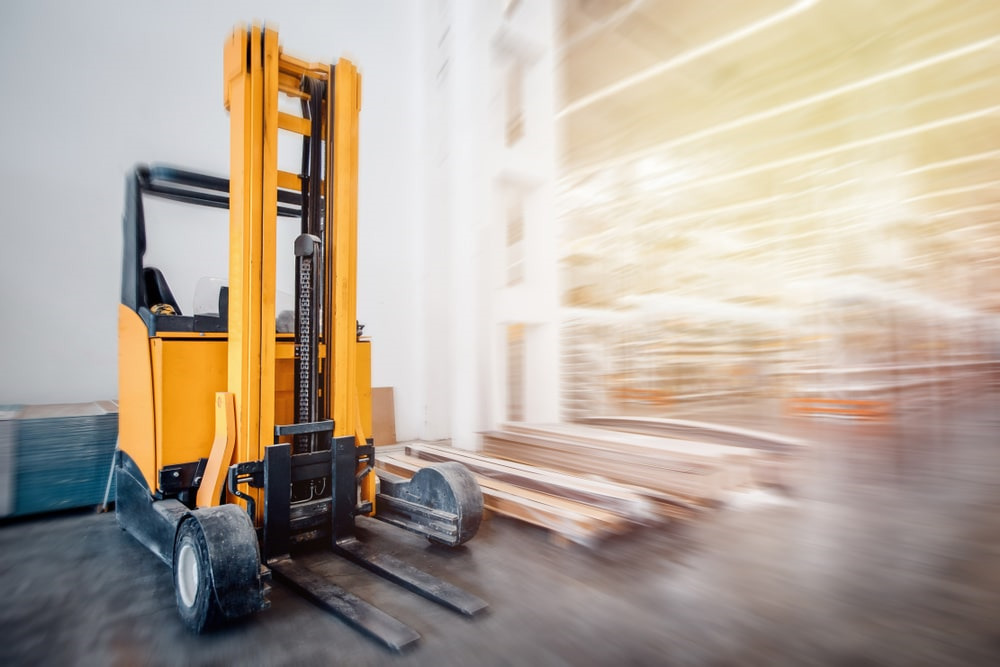What is Industrial Material Handling Equipment? – Mechanical devices known as material handling equipment (MHE) are used to transport, store, regulate, and protect materials, commodities, and products during the production, distribution, consumption, and disposal processes. The many types of equipment may be divided into four main groups: storage equipment, unit load formation equipment, positioning equipment, and transport equipment.
On the Linquip website, among the many options available to you, you will find all the information you need to know about Material Handling Equipment, as well as information regarding this marketplace. You can count on Linquip to provide you with as much general and reliable information about this topic, whether you’re a professional or a customer looking for a proper company. We recommend you review a list of all Material Handling Equipment for Sale available in Linquip. You can also visit our Material Handling Equipment Experts, where you can find numerous experts that can help you find suitable equipment based on your application and demand.
We would be delighted to provide you with more information on how we can help you generate revenue within your industry. Don’t hesitate to contact us if you have any questions! With Linquip’s Solutions for Each Company Level, you will be able to upgrade the capabilities of your organization in order to gain a competitive edge by taking advantage of a wide range of options to enhance your organization’s performance. If you are looking for the simplest or the most sophisticated marketing and advertising package for your business, we can help you ensure that your company gets as many customers as possible to grow your business.
What is Industrial Material Handling Equipment?
Equipment used for moving, storing, regulating, counting, and safeguarding materials at any stage of production, distribution, consumption, or disposal is referred to as industrial material handling equipment.

Various Types of Material Handling Equipment
Transport Equipment
While positioning equipment is utilized to manipulate material at a specific location, transport equipment is employed to move material from one place to another (e.g., between workspaces, between a loading dock and a storage facility, etc.). Conveyors, cranes, and industrial vehicles are the three main subcategories of transport equipment. Without utilizing any machinery, material may also be moved physically.
Conveyors
When the material has to be moved regularly along a predetermined course between two sites and when the flow volume is high enough to warrant the fixed conveyor investment, conveyors are utilized. Unit load or bulk load handling, in-floor, on-floor, or overhead position, and whether or not loads may build on the conveyor are all characteristics of many types of conveyors. While on conveyors without the capacity to accumulate, all units move simultaneously, accumulation allows for the intermittent movement of each unit of material being conveyed down the conveyor.
Both the roller and the flat-belt are unit-load on-floor conveyors, but the roller has the ability to accumulate material while the flat-belt does not. Likewise, both the power-and-free and the trolley are unit-load overhead conveyors, but the power-and-free is built with an additional track to give it the accumulation capability that the trolley conveyor lacks. The magnetic-belt, troughed belt, bucket, and screw conveyors are a few types of bulk-handling conveyors. A sortation conveyor system combines flat-belt, roller, and chute conveyor segments with various moveable arms and/or pop-up wheels and chains to deflect, push, or pull products to various destinations. It is used to merge, identify, induct, and separate products before they are transported to specific destinations.
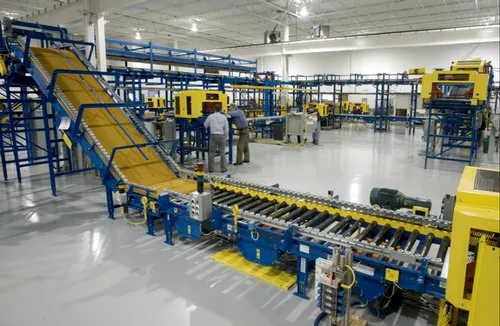
Cranes
When there is inadequate flow volume and the usage of a conveyor cannot be justified, cranes are employed to move loads across varying (horizontal and vertical) pathways inside of constrained space. Because the items handled might be more diverse in terms of their shape and weight, cranes offer greater mobility than conveyors. Because they can only function in a limited space, cranes provide less mobility than industrial vehicles, even though some can run on a movable base. Hoists and trolley-and-track systems are often employed by cranes for vertical movement, while hoists and hoist systems are utilized for horizontal movement, but manipulators may be used for precise load positioning. The jib, bridge, gantry, and stacker cranes are the most popular types of cranes.
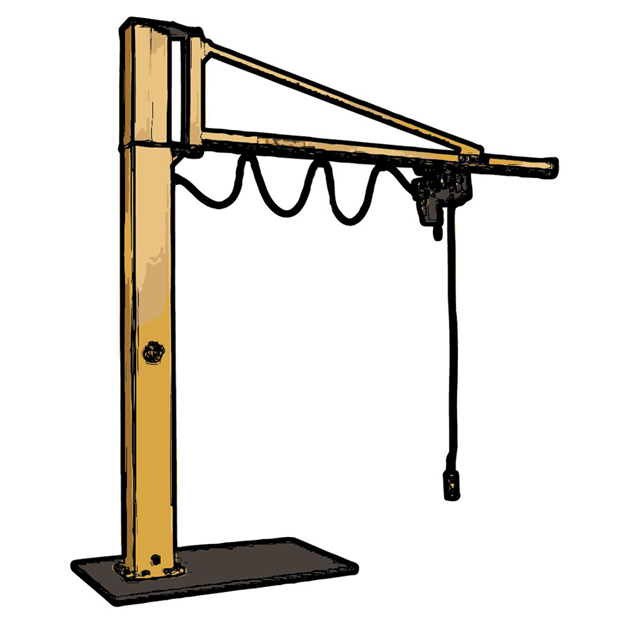
Industrial Trucks
Industrial trucks are vehicles that lack a permit to use public highways (commercial trucks are licensed to travel on public roads). When a conveyor cannot be utilized because of insufficient (or intermittent) flow volume, industrial trucks are employed to transfer items along varied pathways. Because there are no constraints on the area covered and because they may allow vertical movement provided the truck has lifting capabilities, they offer greater mobility than conveyors and cranes. Different industrial trucks can be identified by their forks for handling pallets, powered or manual lifting and travel capabilities, ability to stack loads, ability to maneuver in tight spaces, ability to allow the driver to ride on the truck or require the driver to walk alongside the truck while traveling.
The most basic kind of industrial vehicle, the hand truck (includes carts and dollies), cannot stack or transfer pallets, is not powered, and its user must walk. The front wheels of a pallet jack, which cannot stack a pallet, are located within the tips of forks that extend to the ground; the pallet is only raised high enough to clear the ground for further movement. Pallets can be transported and stacked using a counterbalanced lift truck, which is also known as a forklift truck but can also have additional attachments besides forks. The driver can ride on the truck. The truck’s front wheels serve as a fulcrum or pivot point, counterbalancing the weight of the cargo and the weight of the vehicle beyond them with the weight of the vehicle (and the driver) behind the truck’s front wheels. In order to shorten the turning radius of the truck, narrow-aisle trucks typically require the driver to stand up while operating the vehicle. In addition to the truck’s counterbalance, other devices like reach mechanisms and outrigger arms that span and support a load may also be utilized. When stacking with a turret truck, the prongs revolve, negating the need for the truck to turn in confined spaces. To enable picking of less than a pallet load, an order picker enables the operator to be hoisted with the cargo. Industrial trucks, called automated guided vehicles (AGVs), can move goods without the aid of a human driver.
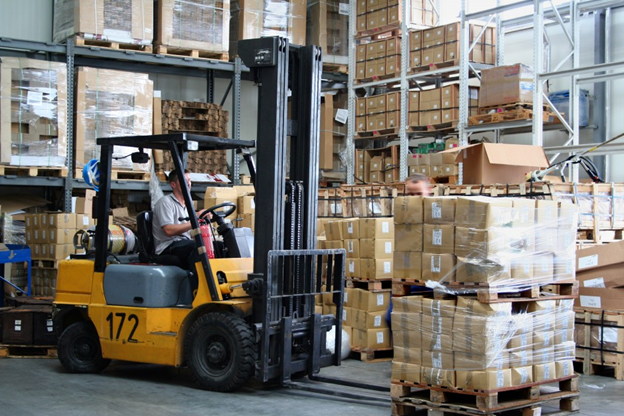
Positioning Equipment
To handle material in a single area, positioning equipment is employed. At the workplace, it can be used to feed, orientate, load/unload, or otherwise move items to set them in the proper position for upcoming handling, machining, transport, or storage. In comparison to manual handling, the use of positioning equipment can increase each worker’s productivity when handling is required frequently, improve product quality and limit damage to materials and equipment when handling requires heavy or awkward objects and damage is more likely to occur due to human error or inattention, and lower fatigue and injuries when working in dangerous or inaccessible environments. In many instances, the ergonomic demands of a work justify the need for positioning equipment. Lift/tilt/turn tables, hoists, balancers, manipulators, and industrial robots are a few examples of positioning equipment. Manipulators bridge the gap between hoists and industrial robots because they can be used for a wider range of positioning tasks than hoists and are more flexible than industrial robots because they use manual control. They do this by counterbalancing the weight of a load so that an operator only lifts a small portion (1%) of the load’s weight. A manipulator’s end-effector may be fitted with mechanical grippers, vacuum grippers, electromechanical grippers, or other tools, and they may be powered manually, electrically, or pneumatically.
Unit Load Formation Equipment
Equipment for unit load creation is used to constrict materials so they may be handled as a single load during transit and storage and keep their integrity. Materials can be molded into a unit load without the need for equipment if they are self-restraining (such as a single part or interlocking pieces). Pallets, slip sheets, skids, cartons, tote pans, bins/baskets, bags, and crates are a few examples of equipment used in unit load formation. A pallet is a platform constructed of wood (the material used most frequently), paper, plastic, rubber, or metal that has enough room beneath its top surface (or face) to accommodate the insertion of forks for subsequent lifting operations. When a load is placed on a slip sheet, it is a thick piece of paper, corrugated fiber, or plastic that includes tabs that can be reached with specialized push/pull lift truck attachments. In order to save weight and bulk, they are utilized in place of pallets, however loading and unloading are slower.
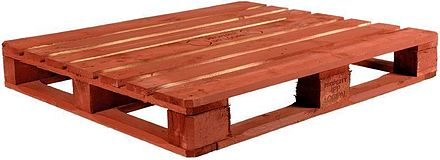
Storage Equipment
Equipment for storage is used to keep or buffer resources for later use. By making materials conveniently accessible, each form of storage equipment’s design and application in warehouse design reflect a compromise between lowering handling costs and optimizing space efficiency (or cube). No storage equipment is needed if materials are stacked directly on the floor, but each different item in storage will typically have a stack that is only halfway full. Storage racks can be utilized to allow multiple stacks of different products to occupy the same floor space at different levels, which will increase cube utilization. As the number of units per item requiring storage reduces, using racks over floor storage becomes more advantageous. Similar to this, cube utilization is influenced by the depth at which units of an item are placed in direct proportion to the number of units per item that must be stored.
When there are few units per item, single- and double-deep racks can be used to store pallets. Pallet-flow and push-back racks can be used when there are many units per item, floor-storage or drive-in racks can be used when there are many units per item, and drive-in racks can support pallet loads that cannot be stacked on top of one another. First-in, first-out (FIFO) carton access is supported by carton-flow racks, which may either be used to retrieve individual cartons from pallet loads or used to store them. Bin shelves, storage drawers, carousels, and A-frames can all be utilized to store specific items. A computer-controlled storage system known as an automated storage/retrieval system (AS/RS) includes a storage medium, a transport mechanism, and controls with varying degrees of automation, enabling quick and accurate random storing of goods and commodities.
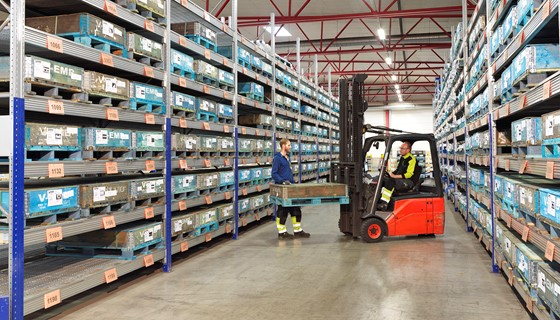
Identification and Control Equipment
Equipment for gathering and transmitting data that is used to coordinate the movement of materials both within and between facilities and their suppliers and clients. Without using specialist technology, the identification of materials and related control can be made manually.
Different Applications For Material Handling Equipment
Many businesses across numerous sectors employ material handling equipment because of the wide range of technology and equipment it covers. Here are a few typical applications for material handling machinery across several industries:
- Agriculture: Moving a lot of loose items, such as crops, fertilizer, seeds, and feed, is a requirement of the job. Forklifts, telehandlers, and aerial lifts are a few examples of agricultural material handling equipment that may be used to load and move commodities. Grain elevators and hoppers are also often used.
- Construction: To help load and move goods around a project site, many construction companies employ material handling equipment. Forklifts, aerial lifts, and telehandlers are a few of the frequently utilized pieces of equipment in the construction sector.
- Distribution: To transport goods further along their supply chain, those in the distribution business need material handling equipment. AGVs, electric forklifts, and stackers are a few of the key distribution material handling tools.
- Landscaping: To carry and transport big objects, such as pallets of plants or loose dirt, landscaping businesses rely on material handling equipment. Both hand trucks and lift trucks are common types of material handling equipment for landscaping.
- Manufacturing: One of the sectors most reliant on equipment and systems for material handling is manufacturing. Pallet trucks, forklifts, order pickers, and AGVs are a few examples of manufacturing material handling equipment.
- Warehousing: Material handling equipment is repeatedly used by businesses that run warehouses to assist in the processing and storage of commodities. Reach trucks, pallet trucks, stackers, and order pickers are common pieces of material handling equipment used in warehouses.
Importance of Material Handling Equipment
Companies in a variety of sectors can profit significantly from material handling equipment. Many businesses appreciate how efficient and secure their workplace is thanks to material handling equipment and systems. Material handling equipment may also optimize a facility’s space, cut expenditures, and decrease waste. The following are a few of the main advantages of employing material handling equipment:
- Greater efficiency: The capacity of material handling equipment to process objects effectively is one of its main benefits. By enhancing the flow of materials across a business, outfitting your space with the appropriate material handling equipment helps lower production pauses. You may increase efficiency by using various material handling tools to move items to important areas more quickly and consistently.
- Reduced waste: A company’s products are far more likely to be damaged during transit and storage when it uses manual labor or subpar equipment to handle them, which increases material and product waste. Material handling devices may considerably minimize waste in your business. Forklifts and stacking frames, for instance, may safely carry pallets to multiple places while piling up crushable products on top of one another.
- Lower costs: The ability of material handling equipment to assist a business in doing so is another significant advantage. You may boost your profitability by reducing work stoppages and mistakes when you employ equipment made to speed up operations in your system. Additionally, waste is decreased by material handling equipment, which lowers the expense of replacing ruined goods and supplies.
- Better warehouse space utilization: Utilize your warehouse space more effectively by using several types of material handling equipment, including storage and handling equipment. For instance, you may build tall racks to expand your capacity for vertical storage and mezzanines to add a second storage level to your warehouse. Aisles can also be placed closer together, thanks to side loaders. You may greatly boost your warehouse capacity by making better use of the available space.
- Increased worker safety: One key advantage of adopting material handling equipment is that it lessens the amount of physically demanding manual labor that your personnel must perform. Heavy lifting and hauling by hand frequently cause chronic injuries, thus, equipment made to accomplish these activities can improve worker safety. Materials from falling and injuring employees are also prevented by secure storage equipment and machinery.
How To Choose The Right Materials Handling Application Equipment?
You might be interested in purchasing bulk material handling equipment for your operation, given all of its advantages. Discover more about the key factors you might want to take into account when choosing the appropriate equipment for your requirements:
- Material type: Determine the sort of material you will be working with first. What sort of material handling equipment you’ll need might depend on the material’s weight, size, and form, as well as whether it’s gas, solid, or liquid. You can cross anything off your list if it can’t manage your materials safely or effectively.
- The layout of the facility: The equipment you may utilize will depend on how much room you have there. Certain types of warehouse machinery are better suited for smaller or bigger locations. Make sure your equipment can securely transit the room, access your materials, and fit between aisles before you pick it up.
- Production flow: You may probably employ a full conveyor system if your business has a steady production flow between two fixed sites. However, if your production flow is subject to a lot of fluctuation, you should favor simple equipment to reroute around the plant and change directions.
- Operation types: In addition to the production flow, you might want to consider the kinds of operations you typically carry out. For short activities, renting equipment may be preferable, but purchasing equipment may be preferable for ongoing operations. It’s also critical to recognize if your material flow pattern is horizontal or vertical.
- Cost: As you choose your equipment, you should probably think about your budget. You might want to use secondhand or rental equipment if you don’t have much cash on hand for a down payment. To make sure you’re getting the most for your money, you might also want to think about the upkeep and running expenses of specific pieces of equipment before you buy.
- Structural considerations: Before choosing any equipment, make sure it is suitable for the structural considerations of your institution. For instance, your facility’s structural integrity, door and ceiling dimensions, and floor conditions all be compatible with the material handling equipment.
- Reliability: Any business understands the importance of having reliable equipment since it maintains a smooth production flow and reduces maintenance costs. To get the most dependable equipment and thorough after-sale assistance, go to a reputable provider like RAKA when you need a new piece of machinery.
Download PDF for What is Industrial Material Handling Equipment?
You can download the PDF format of this post from here.
Buy Equipment or Ask for a Service
By using Linquip RFQ Service, you can expect to receive quotations from various suppliers across multiple industries and regions.
Click Here to Request a Quotation From Suppliers and Service Providers
Read More on Linquip
- What Is 3D Printing and How Does It Work? + Applications
- What Is The Difference Between A Blind Rivet And A Pop Rivet?
- What Are Solid Rivets And How Do They Work? (Clear Guide)
- What Are Blind Rivets and How Does It Work? (Comprehensive Guide)
- What is Pop Rivets and How Does It Work? (A Comprehensive Guide)

